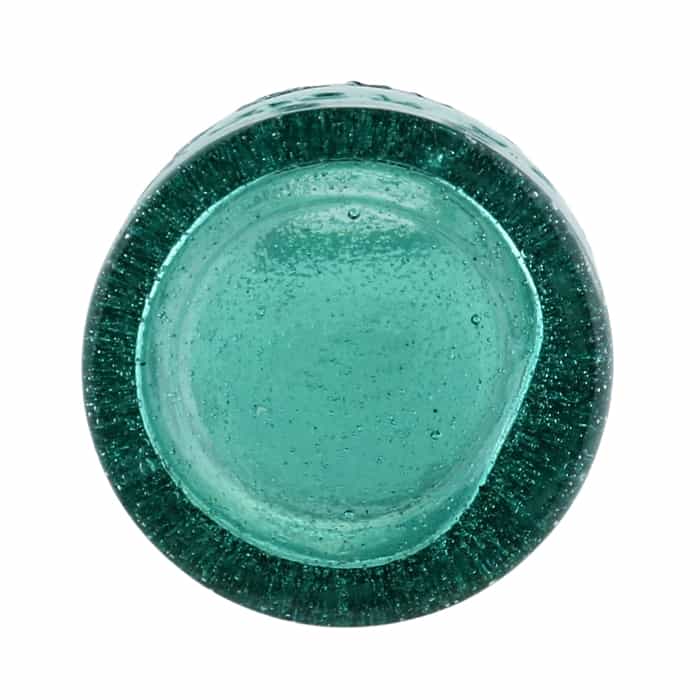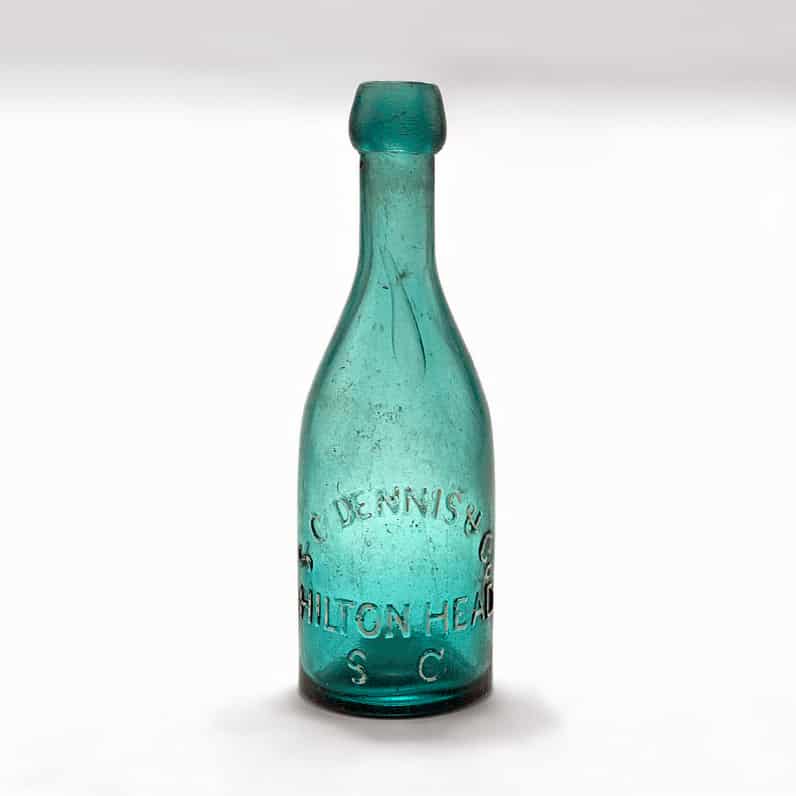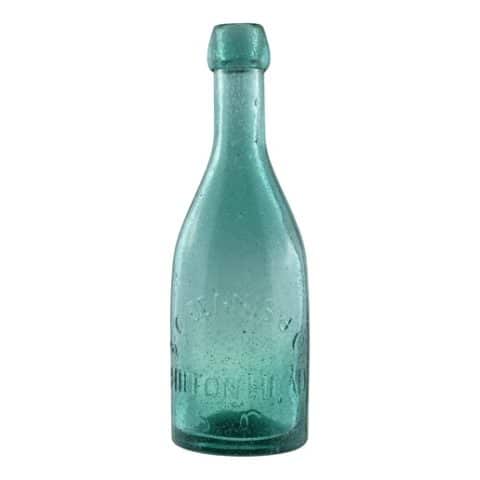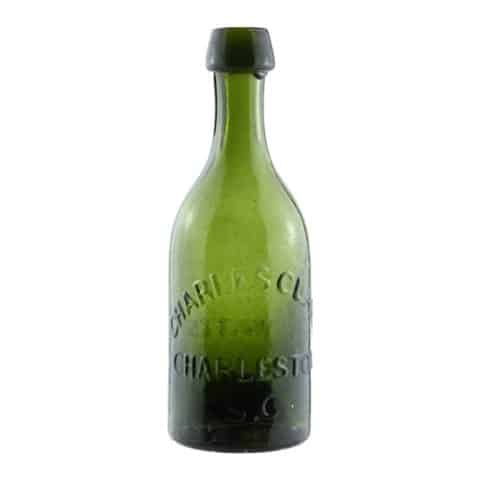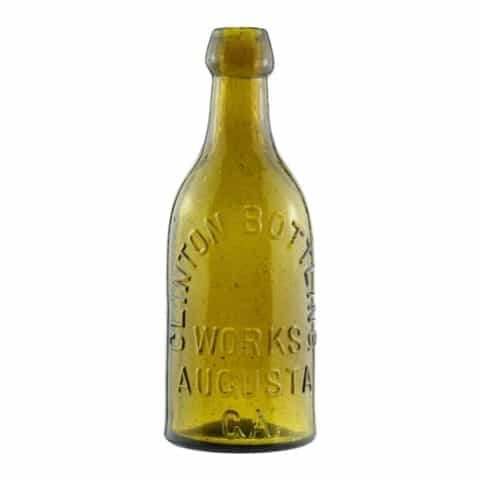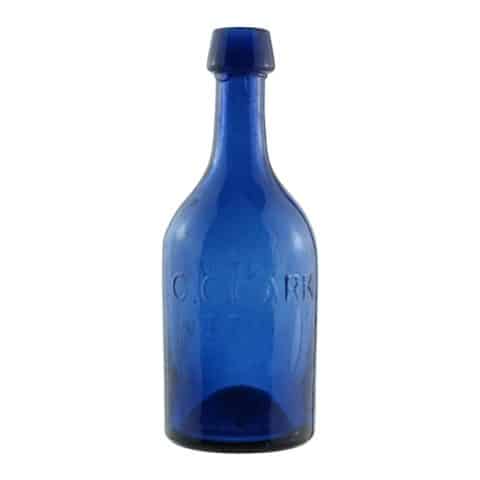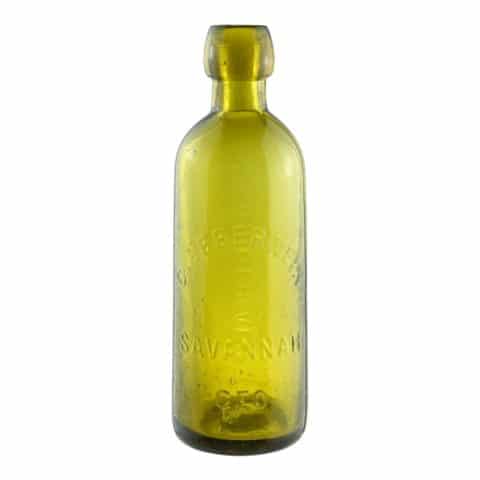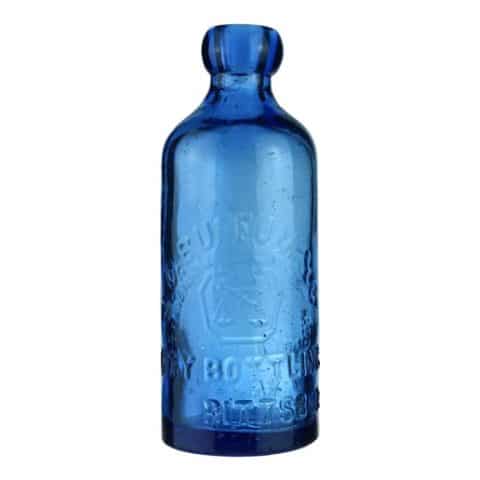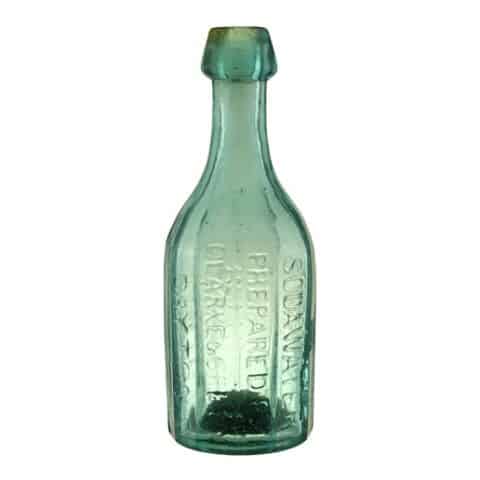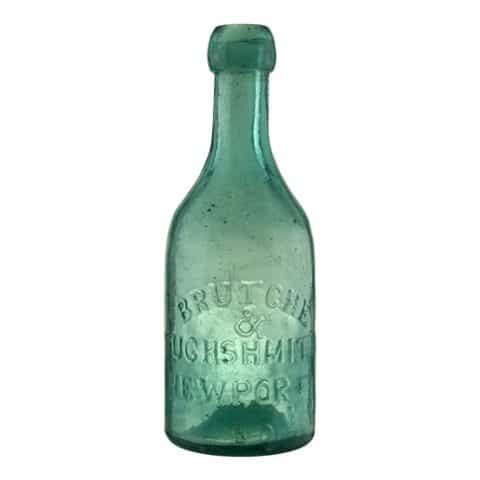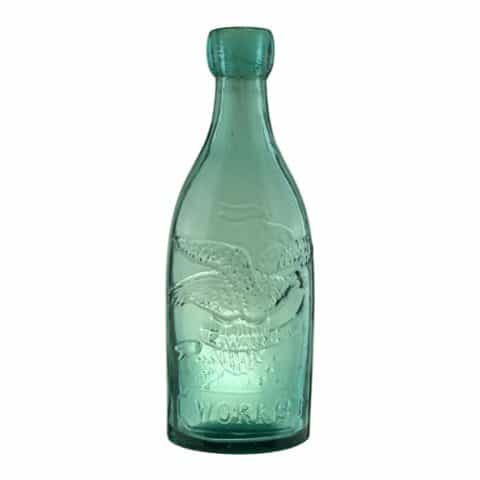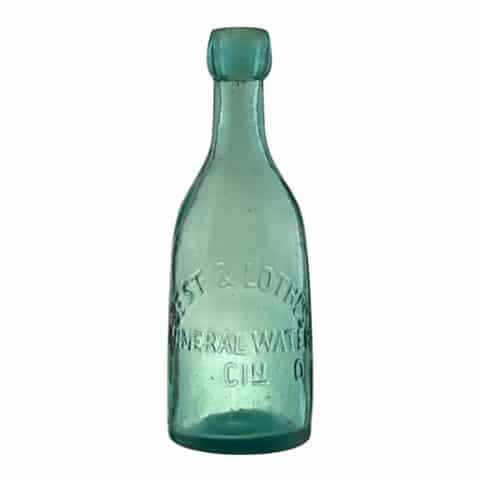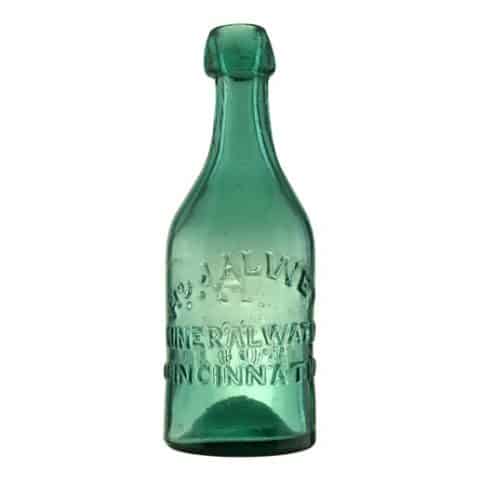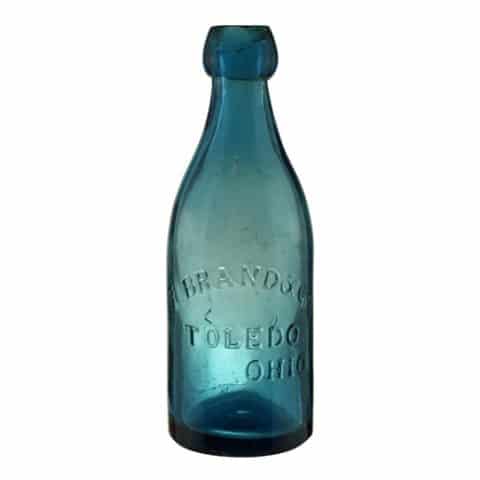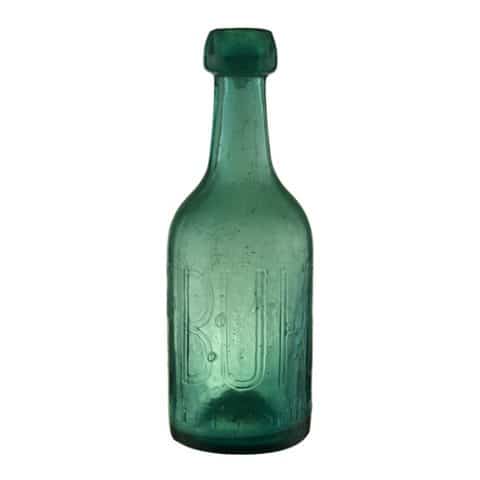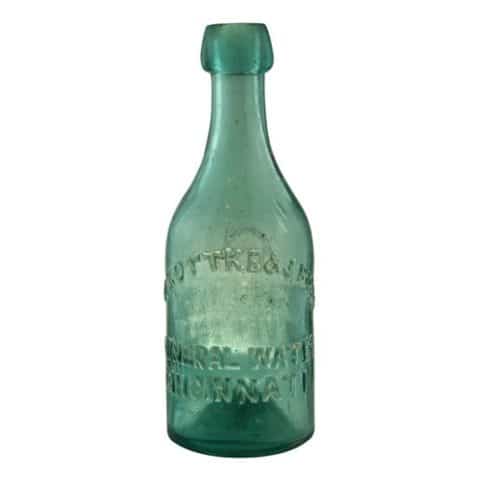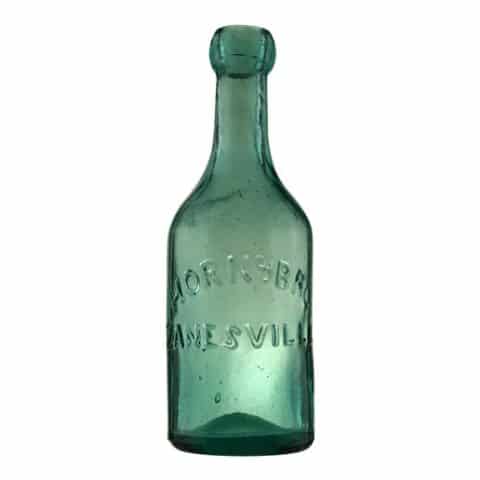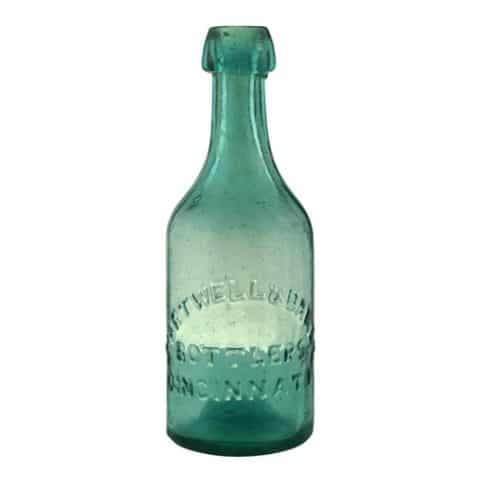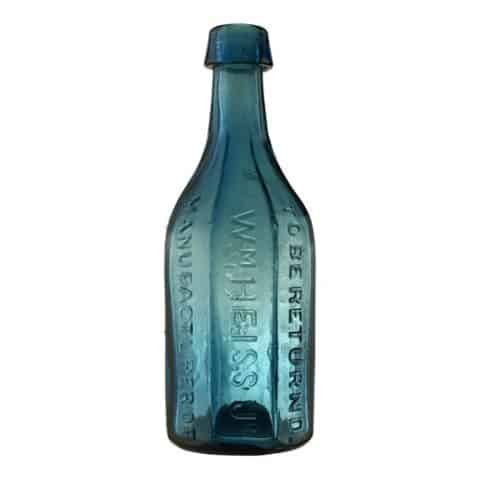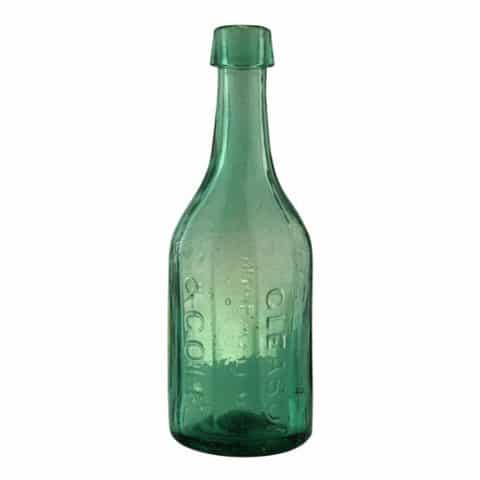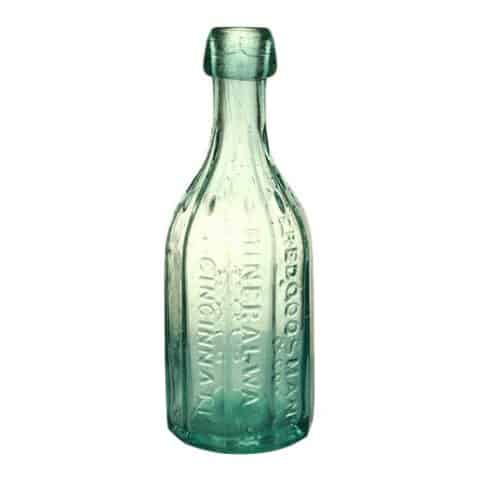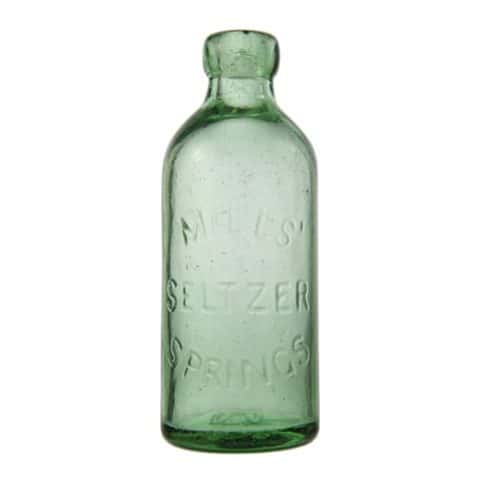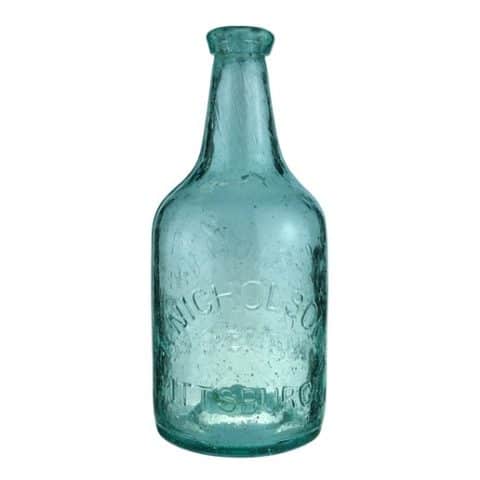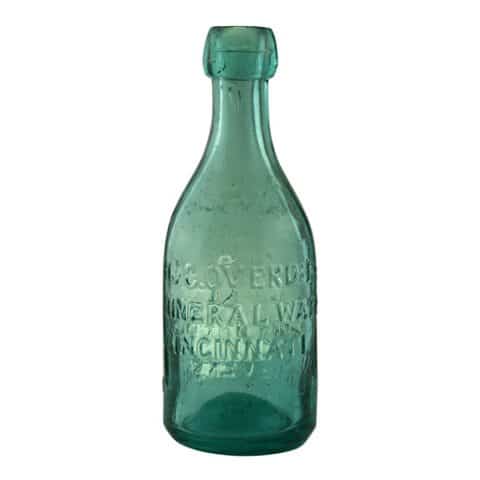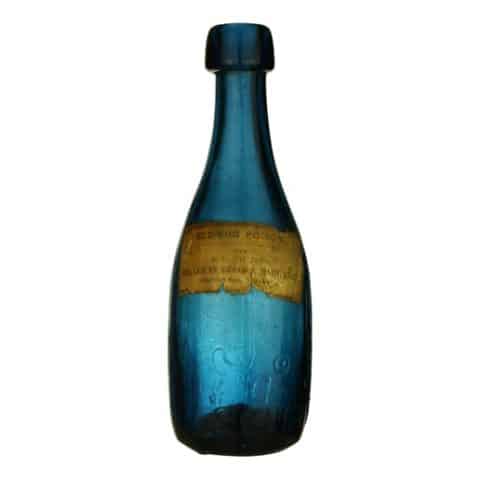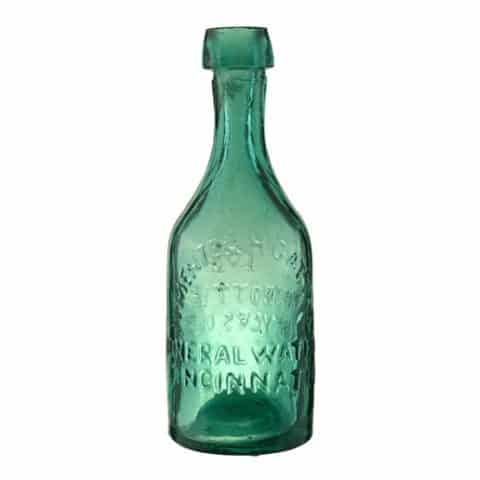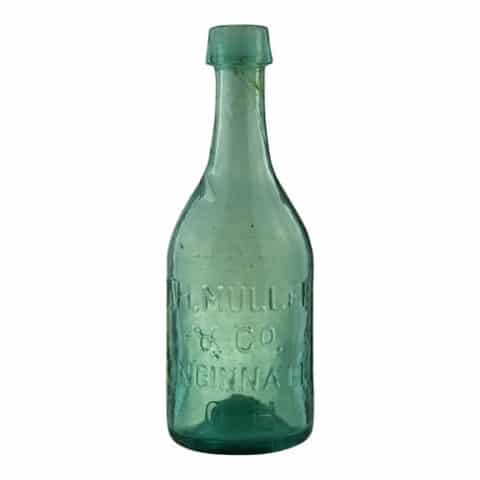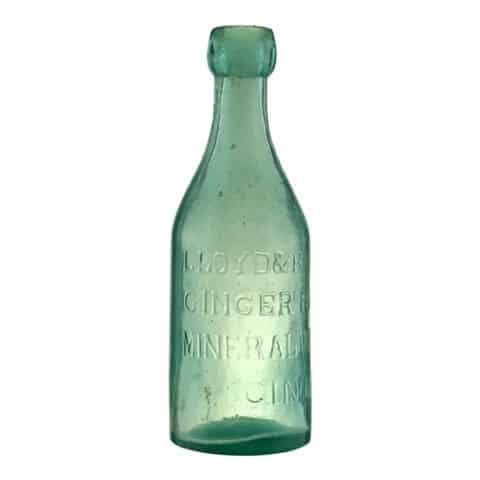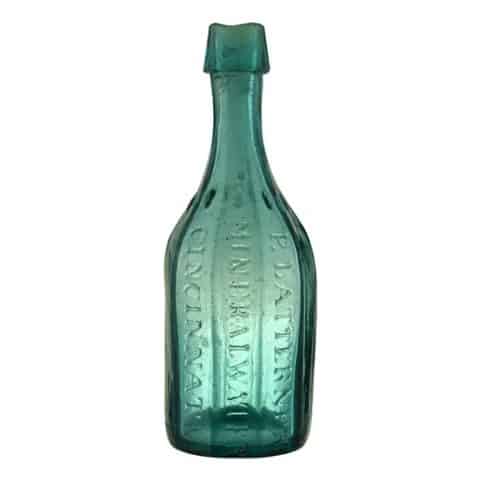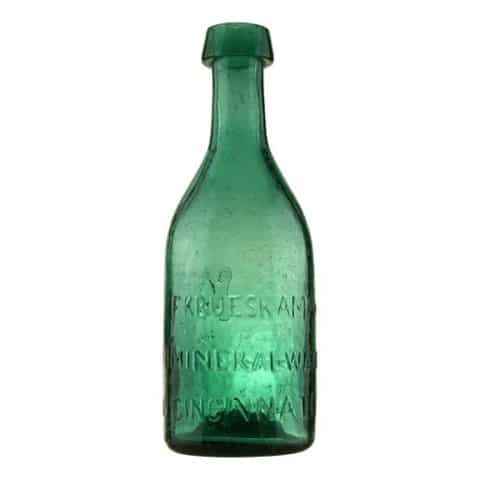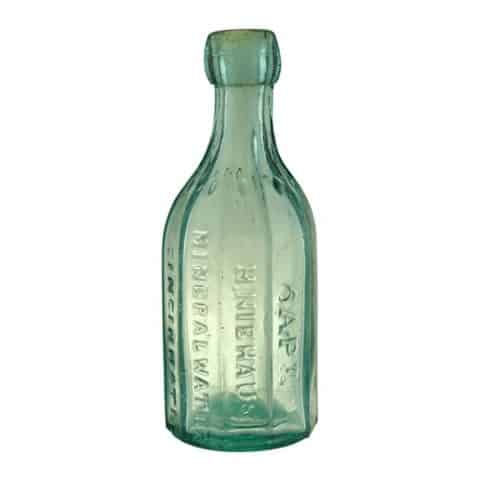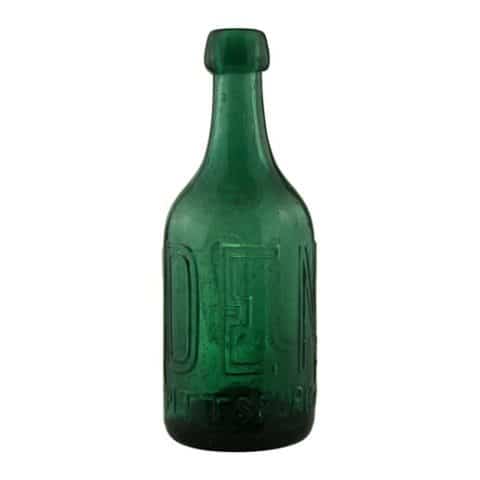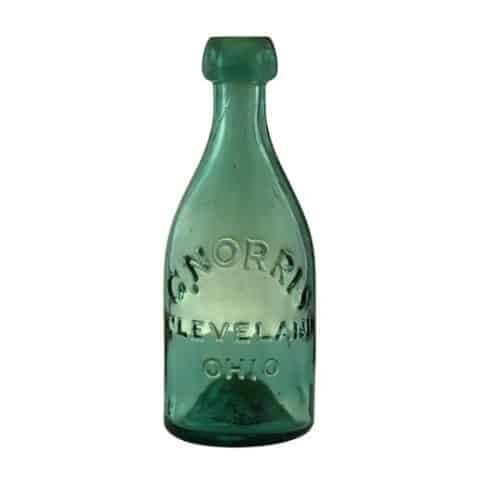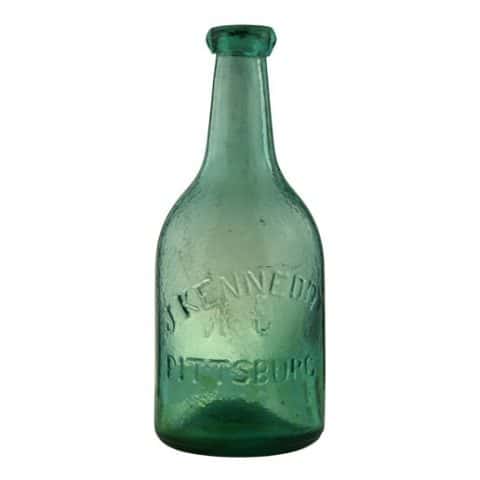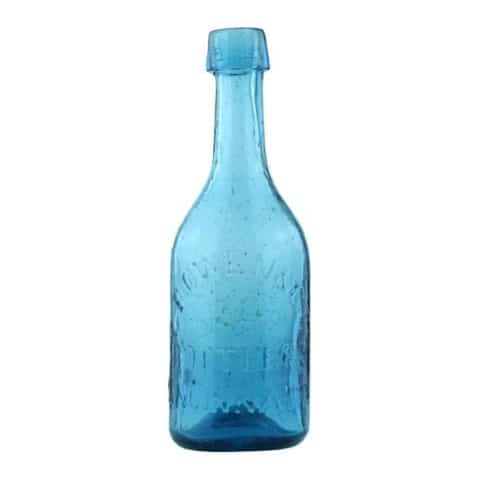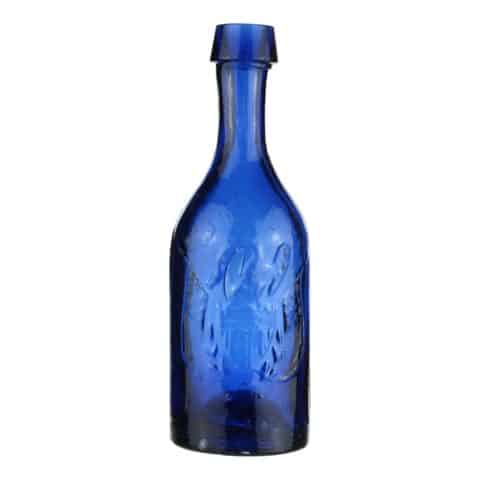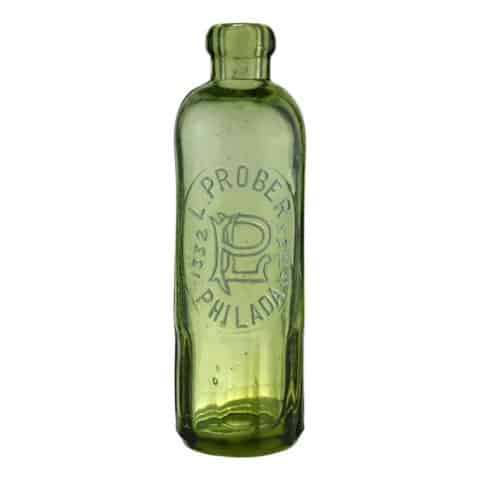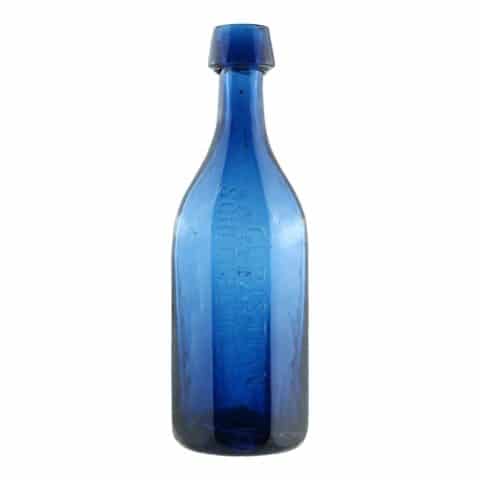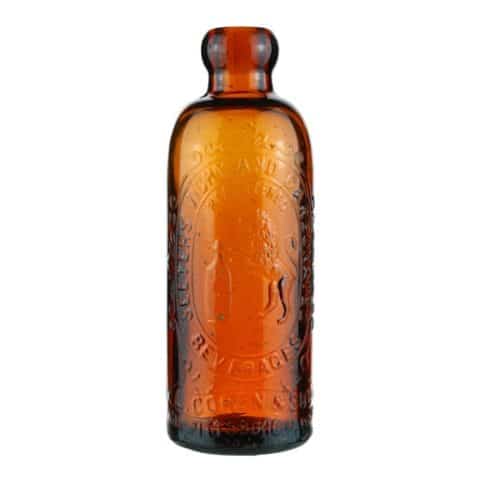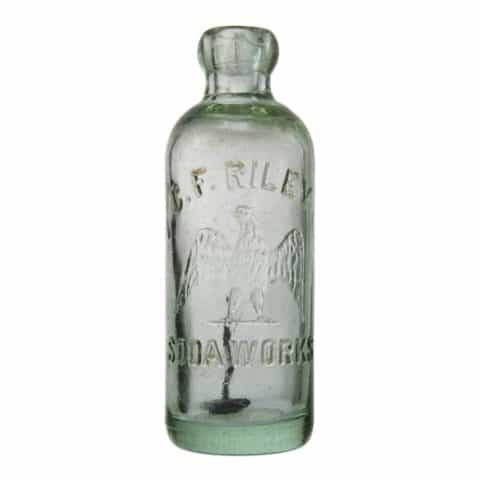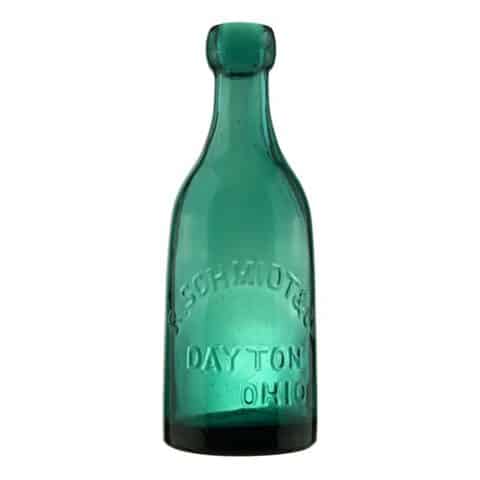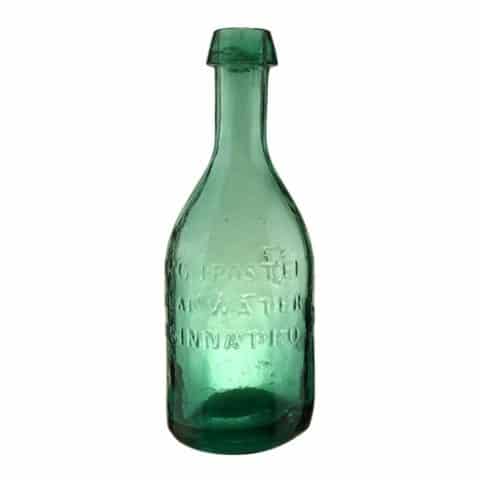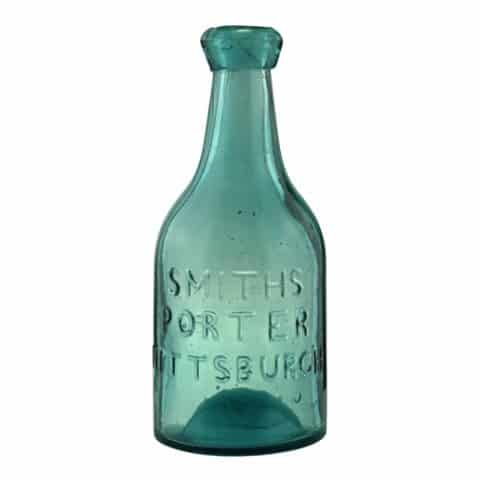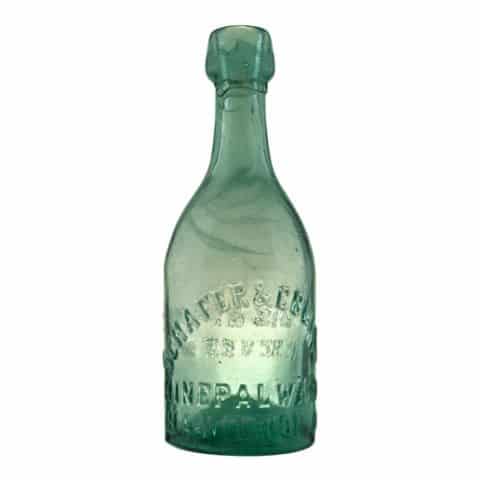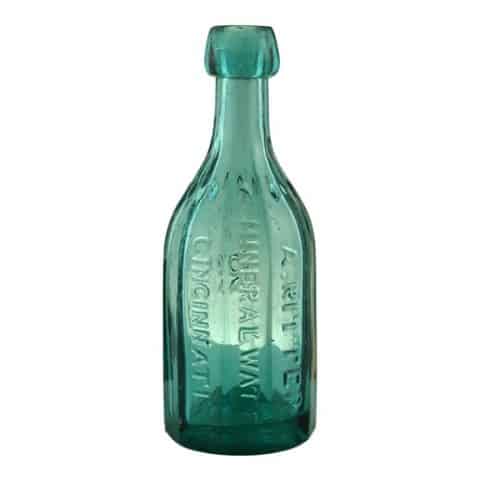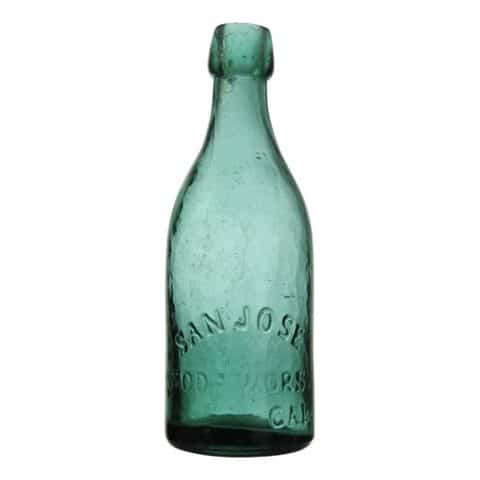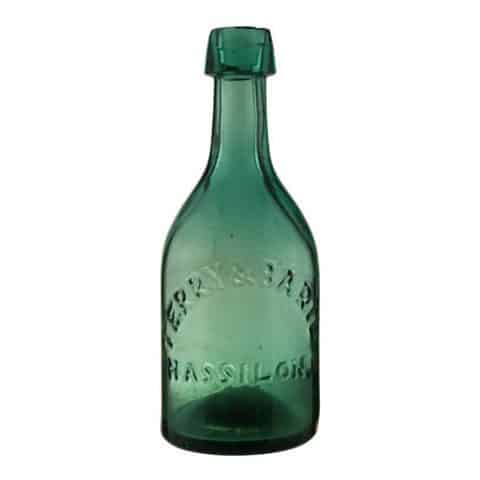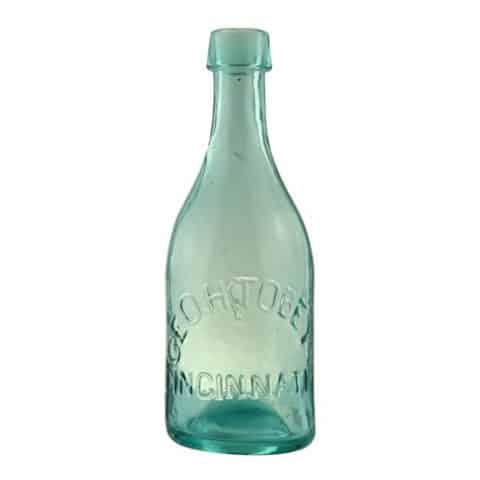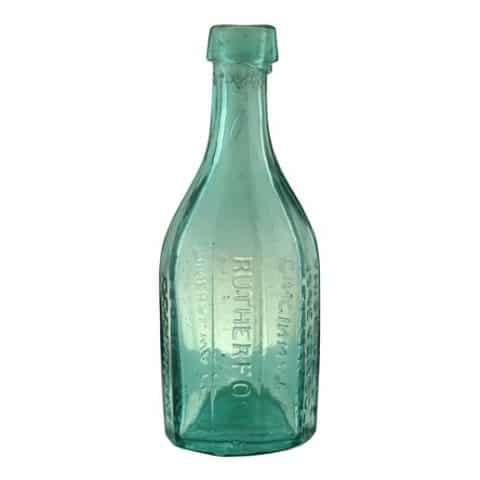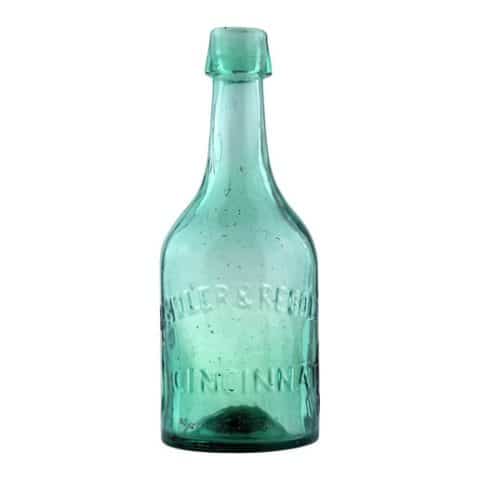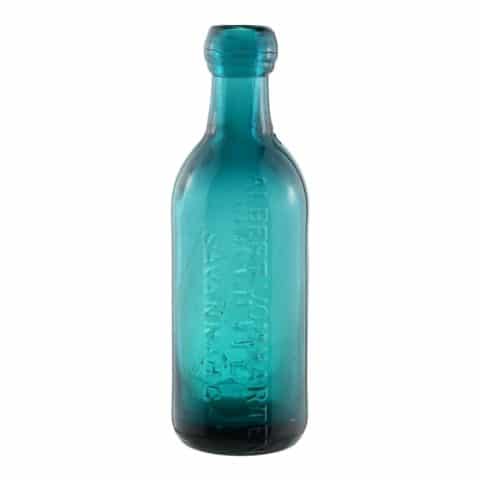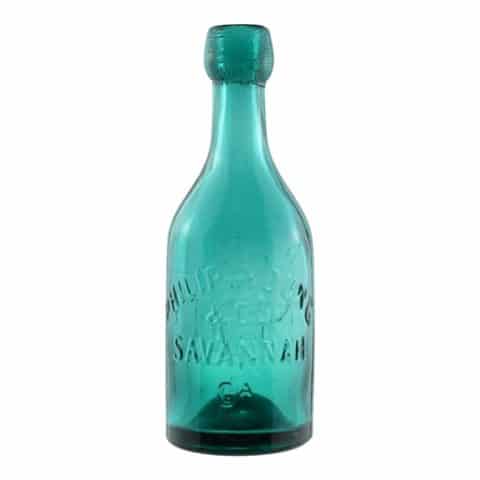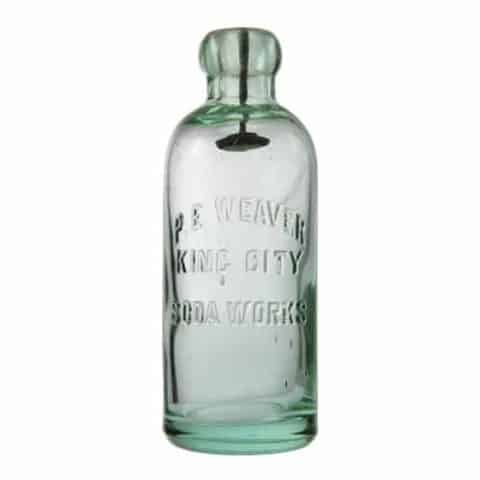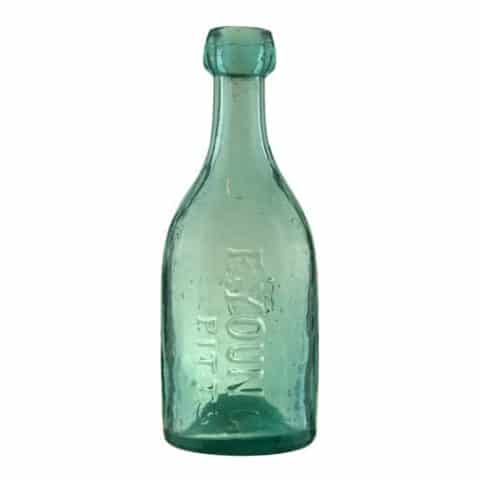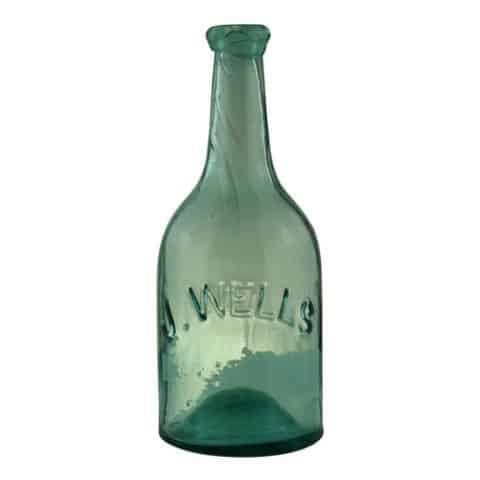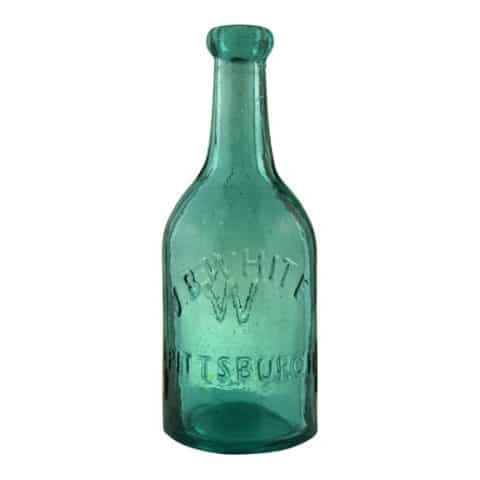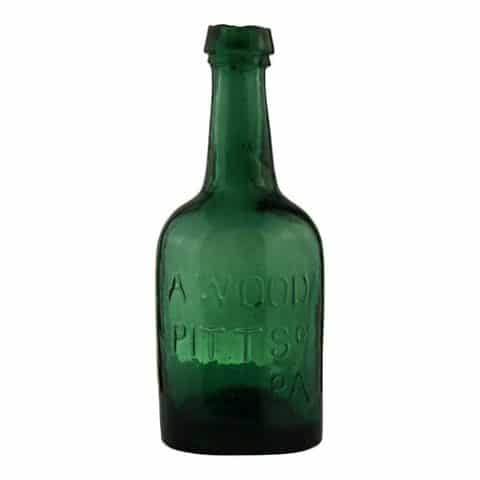SC Dennis & Co. Hilton Head S.C.
S C Dennis & Co
Hilton Head S C
Samuel C. Dennis, Hilton Head Island, South Carolina
Light Blue Green Soda Water
Provenance: Mike Newman Collection
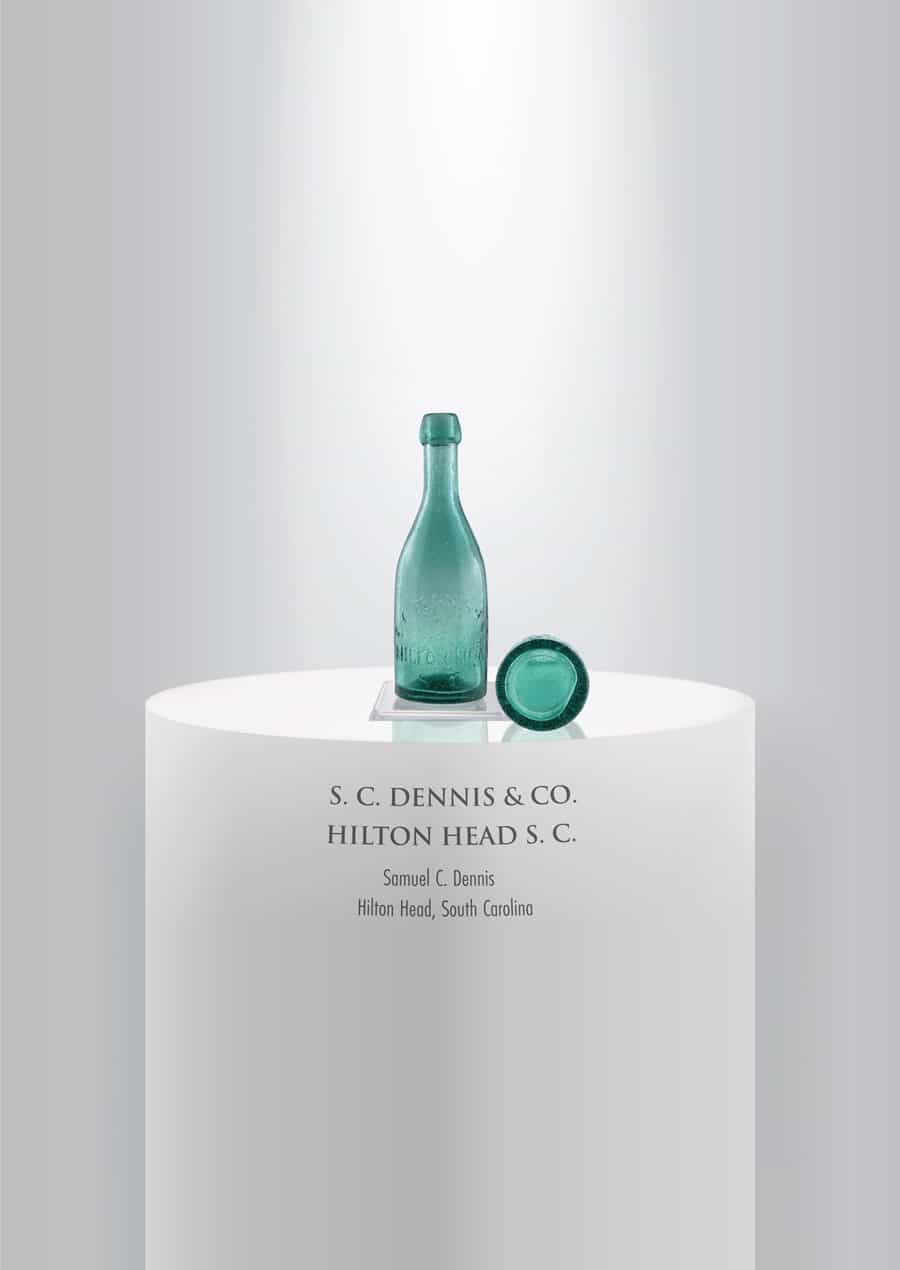
The “S C Dennis & Co Hilton Head, S C” bottle is interesting as it connects the North and South during the Civil War. Our outstanding example, loaded with tiny bubbles, tells this story which was told in the January-February 2022 issue of Bottles and Extras. The soda bottle tells us of Union sailors or jack-ashores coming to Robber’s Row for a good time. They would have their good time, but afterward, many headed back to their barracks or ships all too frequently with their pockets empty of cash.
The S. C. Dennis Hilton Head soda bottles are considered extremely rare because there are less than a dozen known. In the 1970s, bottle collector Bobby Hinely dug four in a marsh area behind Robber’s Row.
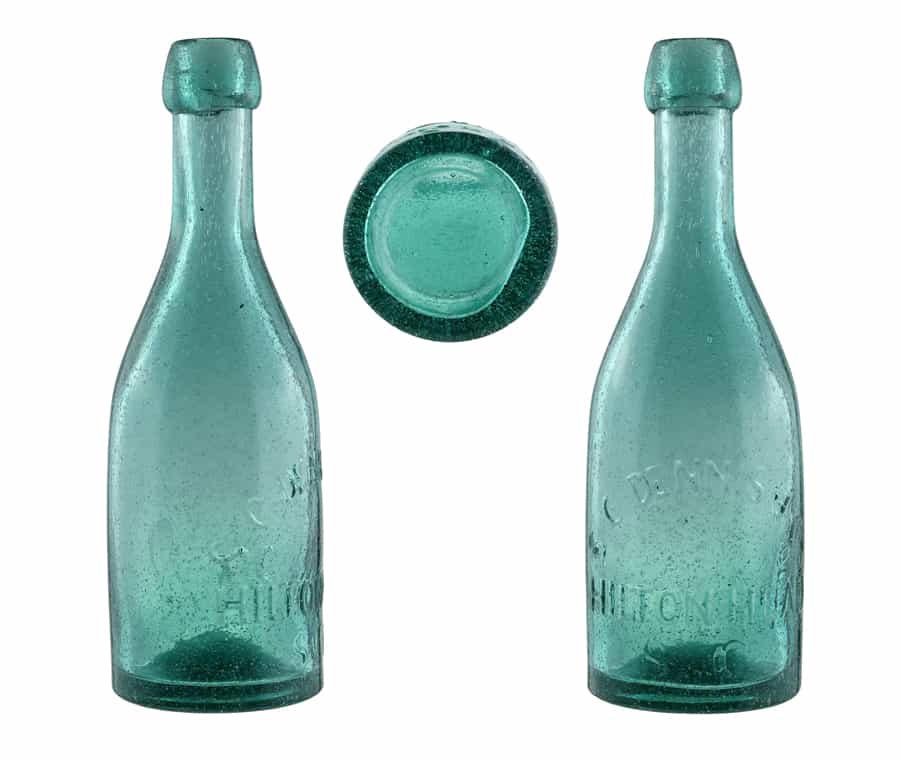
Our museum example measures 7 ¾ by 2 ½ inches and is a light teal blue-green cylindrical Pony form bottle. The manufacturer is unknown. The embossed face of the bottle contains three lines of serifed copy reading ‘S C DENNIS & CO’ in an arch over horizontal straight-line copy reading ‘HILTON HEAD’ (2nd line) and ‘S C’ (third line). There is a rounded tapered mouth and a smooth base. The bottle has a long neck rarely seen on other southern sodas. Bottles are reported in light green and light teal blue-green. In the previously auctioned examples, periods are recorded in both sets of “S. C.” initials. We do not see them in our example though they could be lightly embossed and obscured by bubbles.
Samuel C. Dennis was a dry goods merchant for thirty years in Connecticut during the middle of the 19th century. During the Civil War, he and his first cousin Charles Dennis, partnered in a soda water manufacturing and dry goods business at Sutler’s Row on Hilton Head Island, South Carolina. This was a long-distance relationship separated by some 900 miles. Charles was selling dry goods and manufacturing soda water on the island using bottles with Samuels’s name! Hilton Head Island during the war was called Port Royal and was a major Union force garrison and city with a population at the peak of the war of over 40,000. Both Samuel and Charles profited greatly from the war while also providing goods for the needs and comforts of soldiers.
S. C. Dennis was born January 6, 1819, in Norwich, Connecticut, the son of Henry Dennis and Sarah Briggs. Not much is known about his youth, but he appears to have been educated. In 1842, when Samuel was 23 years old, he opened S. C. Dennis & Co., a dry goods store located at the corner of Main and Union Streets in Norwich. That same year a newspaper advertisement said he was selling worsted patterns. Worsted means “woolen fabric made of twisted yarn,” often used for knitting. Since this was 20 years before the fashion industry, worsted patterns would have enabled ordinary people to make their clothing at home. The ad also gave notice that he was selling “jewelry, silver ware, Jappened ware, Britannia ware, cutlery, brass goods, brushes,” as well as hardware. His partner is unknown, but his first cousin Charles Dennis, also from Norwich, is a likely candidate.
In 1849, S. C. Dennis married Elizabeth Morgan, and they had two children, Richard Henry Dennis, born in 1849, and Ernest Moore Dennis, born in 1851. Both boys died young, the former at age 4, the latter at age 11. The couple would later have two more children who lived long lives, Elias Morgan Dennis, born in 1855, and Helen Morgan Dennis, born in 1862. In 1861, his first cousins Charles William Dennis, John Benjamin Dennis, and Gorham Dennis, sons of his uncle Jared Gallup Dennis, enlisted in the Norwich Battalion, 7th Regiment Infantry of Connecticut Volunteers. There is no record of S. C. Dennis participating in the Civil War. And while John and Gorham went off to fight, Charles, with special permission from the government, stayed and set up a dry goods store at Port Royal, South Carolina.
Port Royal was a Union forces coal-refueling and maintenance facility for blockading ships and a base to care for the sick and wounded. The town grew as civilians and Union troops on the island increased from 13,000 to over 40,000. Port Royal had two weekly newspapers, four hotels, numerous saloons, a tattoo parlor, theater, bakery, butcher, and various dry goods stores. It was also the place for “jack-ashore,” a slang term for sailors on shore leave who came to town for shagging and drinking at the Port Royal House on Sutler’s Row. It was here that jack-ashores could get a meal, drink beer and ale and spend time with “some convivial women” if they had money. Sutlers Row, Merchants Row or Main Street was a popular place where sailors could spend their money and became known as “Robbers Row” since sailors often saw their paychecks during their time here diminish quickly.
Life at Port Royal often consisted of a few beers and pictures taken at Beard and Company’s shack before staggering to the tattoo parlor to get his arm tattooed with the choice of anchors; the cables fouled around the man’s initials, hearts, flowers, ships under full sail, lovers’ knots, and religious mottoes and bridal wreaths. The wartime sailors got these tattoos for pride, and in case they were maimed, killed, or knocked over the side in battle at sea. Now his shipmates could recognize the tattoos he bore. A clever use of tattoos was for identification long before dog tags existed.
In 1862, Charles opened a dry goods store at No. 4 Sutler’s Row under the name C. W. Dennis & Co. Charles sold everything from clothing, shoes and playing cards to tobacco, butter and cheese. Charles also had an ice cream saloon at his business that boasted “the very best cream by the plate, quart or gallon, always on hand,” operated by B. F. Skinner. One advertisement even announced he sold metallic coffins in his store, which would be understandable for wartime on an island with a hospital. Metallic coffins were essential to the sailor and soldier’s family because they kept a dead body from decomposing long enough to make it home for the funeral. These coffins were designed to take the air out or be filled with gas to prevent putrefaction. The coffins often had viewing plates, allowing relatives to view the departed one’s face. Additionally, they were sealed very tight, making it difficult or nearly impossible to open, which prevented anyone from removing anything of value in the coffin.
A half-brother of Charles, George H. Dennis appears to have operated a saloon and billiards parlor at Port Royal during the Union occupation. This notable family was not only engaged in Civil War battles but also in the commerce that came out of it. A later business address for C. W. Dennis was “No. 5 Merchants Row,” and according to some newspaper advertisements, he was in a co-partnership with N. S. English and J. G. Richardson. Charles was probably getting his dry goods shipments from Samuel or via his suppliers. He also had a soda water apparatus for bottling purposes and sold soda water at his establishment. The bottles he used were made in the North and were likely purchased by Samuel to sell at C. W. Dennis & Co. on Sutler’s Row. This is the only explanation for why S. C. Dennis & Co. is embossed on soda bottles instead of C. W. Dennis & Co.!
The seltzer sodas made during the Civil War were made with flavorings and sweeteners from berries and fruits. The soda craze might have started with only lemonade and ginger ale, but it soon evolved into flavored syrups that included pineapple, orange, lemon, apple, pear, plum, peach, apricot, grape, cherry, black cherry, strawberry, raspberry, gooseberry, pear and melon. These carbonated flavored soda drinks were irresistible and as popular then as they are now.
When the war was coming to an end, Gen. John Benjamin Dennis and Gorham Dennis mustered out. John had reached the rank of general before the war ended. He became paymaster general and served in the South Carolina legislatures in 1868 and 1870. Gorham was a second lieutenant in the war. He moved to Syracuse, New York and worked as a clerk in a grocery store. By 1880, he moved to Providence, Rhode Island, working as a canvasser and later a notary public. George put his saloon and billiards table up for sale but never returned home. Sadly, he was reportedly lost at sea on May 8, 1867. Charles put his store up for sale with goods listed as $150,000 worth of merchandise. An interesting list of his wartime closing-out inventory was “30 tierces hams, 100 barrels sugar, 50 boxes coffee, 500 boxes raisons (sic), 150 barrels walnuts, filberts and Brazil, 300 barrels of flour, 150 cases boots & shoes, 1,000 cases peaches, tomatoes, chicken, turkey, 800 barrels cakes & crackers, 50 barrels molasses, 150 cases tobacco, 200 dozen shirts, 1,400,000 segars.”
At the same time Charles was selling the store, he was also selling his 330-acre plantation on the banks of the Broad River about five miles from Beaufort. In 1866, Charles left Hilton Head Island on board the steamship Granada for New York, where his father had settled. He became a business traveler and settled in Toronto, Ontario, Canada, before returning to New York in 1894. He retired in 1908, probably because he went completely blind a few years later. He died on April 15, 1911, of what the newspapers said was an incurable disease.
Samuel operated S. C. Dennis & Co. for 30 years. The dry goods store mainly became a hardware store before he retired in 1872. He died on June 4, 1874, in New London, Connecticut. His widow Elizabeth lived for another 24 years before she died on March 13, 1898. Samuel and Elizabeth are buried in the Cedar Grove Cemetery in New London.
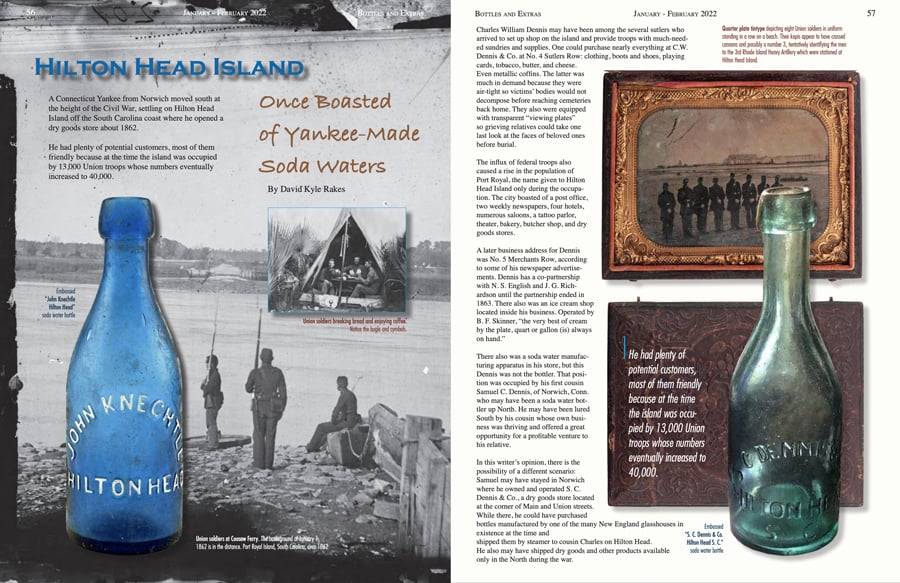
Primary Image: “S C Dennis & Co. Hilton Head S C” soda water bottle imaged on location by Alan DeMaison, FOHBC Virtual Museum Midwest Studio.
Research: David Kyle Rakes from his forthcoming book Early Sodas of the Carolinas – The Bottles & Proprietors – Charleston, Columbia, Georgetown, Hilton Head Island, South Carolina & Weldon, Wilmington, Wilson, North Carolina.
Support Image: Auction Lot 157: “S.C. DENNIS & CO. / HILTON HEAD / S.C.”, South Carolina, ca. 1860 – 1870, light blue green, 7 3/4”h, smooth base, applied blob mouth. A few light scratches, otherwise in perfect condition and full of air bubbles. A rare bottle! – Jim Hagenbuch, Glass Works Auctions, January 2020
Support Image: Auction Lot 450: “S.C. DENNIS & CO. / HILTON HEAD / S.C.”, South Carolina, ca. 1860 – 1870, light blue green, 8”h, smooth base, applied blob mouth. A few light scratches, otherwise in perfect condition. A rare bottle! – Jim Hagenbuch, Glass Works Auctions, November 2019
Support Image: Auction Lot 320: “S.C. DENNIS & CO / HILTON HEAD / SC”, South Carolina, ca. 1865 – 1875, light teal blue, 7 3/4”h, smooth base, applied blob type mouth. A number of tiny ground imperfections and wear exist but no form of damage. Acquired from Peyton Youmans in 1995. – Jim Hagenbuch, Glass Works Auctions, November 2015
Support: Reference to Soda & Beer Bottles of North America, Tod von Mechow
Join the FOHBC: The Virtual Museum is a project of the Federation of Historical Bottle Collectors (FOHBC). To become a member.

